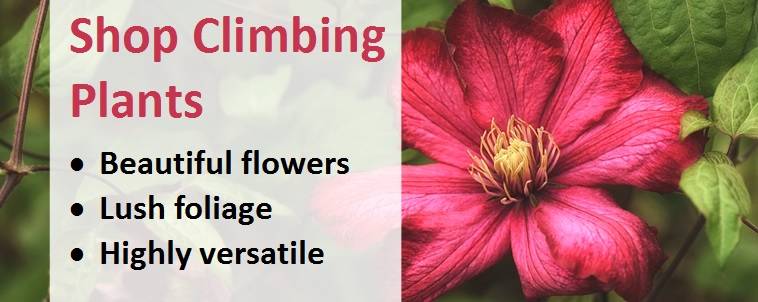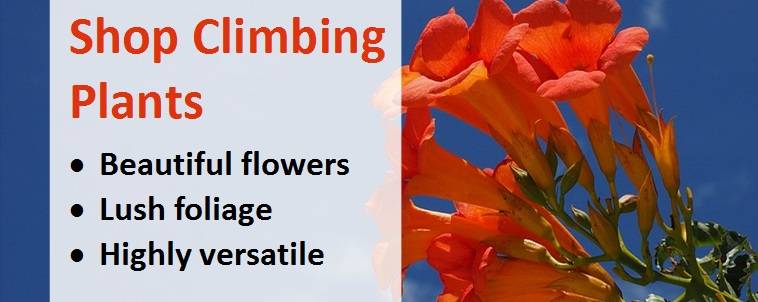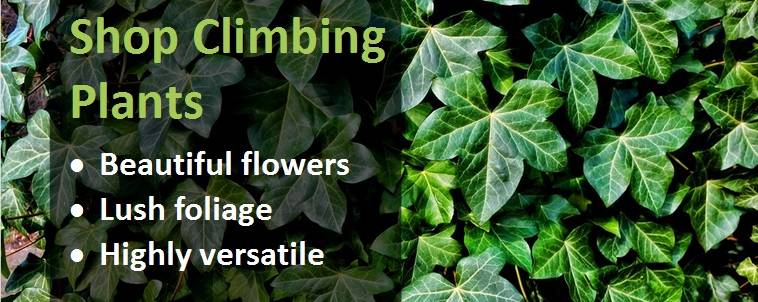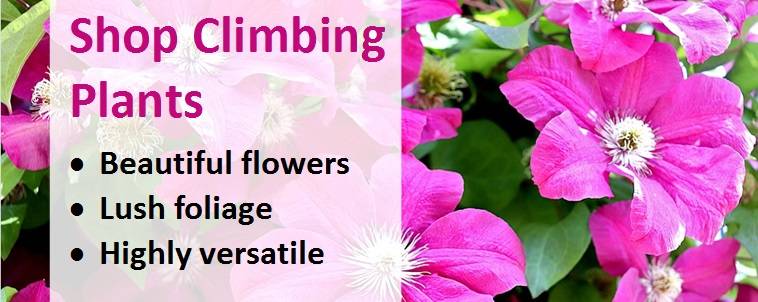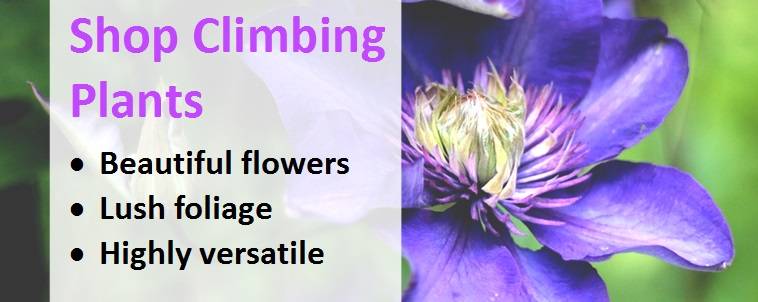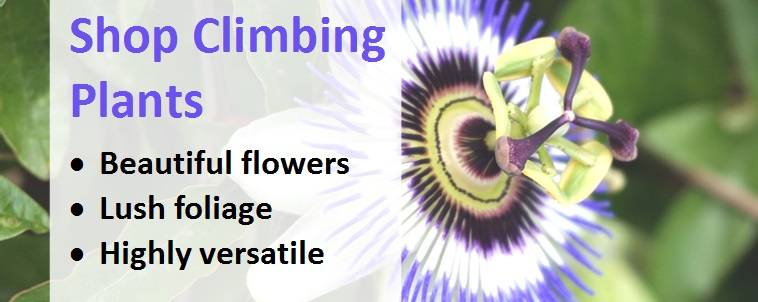Guide to climbing Plants for Fences, Arbours and Trellis
Climbing plants have a special mechanism for climbing, scrambling or rambling by attaching themselves to or twining around supports such as walls, poles, wires or trellis. Climbers are versatile, long-term investments for your outdoor space, offering ways to brighten up your vertical planting areas such as bare walls or simply providing beautiful flowers, lush foliage and a fabulous scent for your garden. True climbing plants are particularly valuable for smaller gardens because they take up little ground space, growing upwards rather than outwards, thereby allowing you to pack more lush foliage, colourful flowers and magnificent scents around your home. Given the wide range of varieties available, you are bound to find something suitable for your location and purpose.
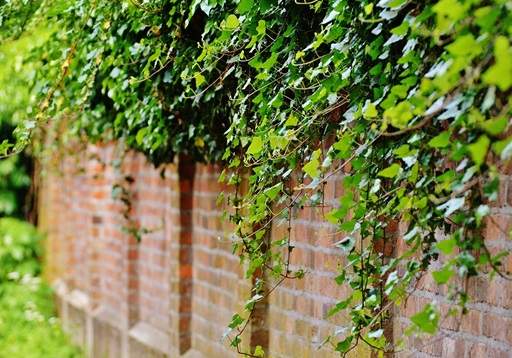
Climbing plants can be highly effective for adding colour and ascent in smaller gardens
Types of Climbers
There are two main types of true climber - self-clinging climbers and twining climbers. Self-clinging varieties are those which naturally adhere to the climbing surface via aerial roots or adhesive pads. Ivy (Hedera), Hydrangea Petiolaris and Campsis have aerial roots, whilst varieties such as Virginia Creeper have adhesive pads along the stems. These climbers will cling to walls or woodwork without the need for a support such as wires or a trellis.
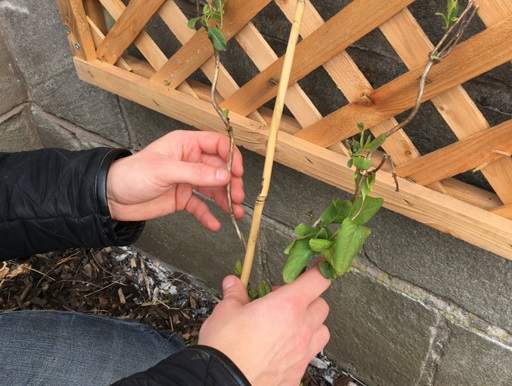
Twining climber
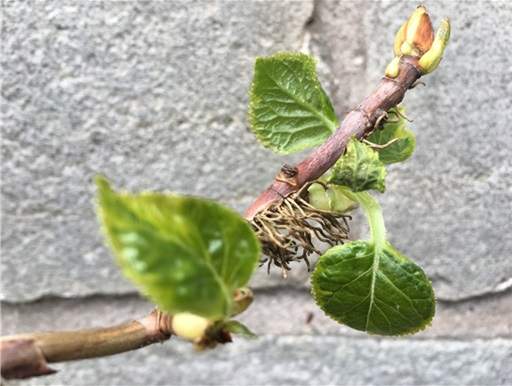
Self-clinging climber
Twining climbers ascend by wrapping themselves around poles, wires or trellis; examples include Honeysuckle, Clematis, Jasmine and Wisteria. These are not so adaptable so do need a framework or structure to which they can cling to and climb over.
Wall shrubs, by contrast, do not naturally climb. Whilst they can be trained to grow against walls using specific pruning and training techniques, they would simply bush outwards and grow like shrubs if left alone. Consequently, wall shrubs are not covered further in this article. However, it should be noted that some true climbers are often used as ground covers whilst some true shrubs are a common sight growing up trellis-work alongside the front doors of houses throughout the country.
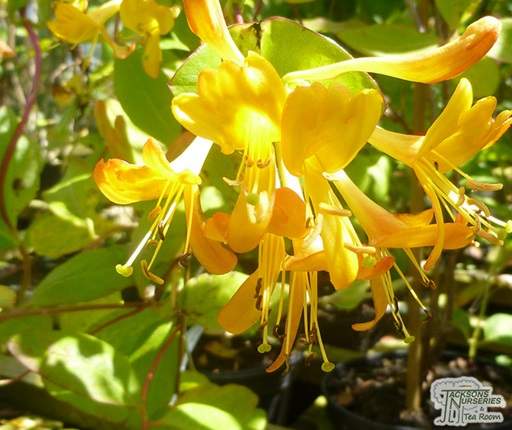
Lonicera Mandarin Honeysuckle
Choosing a Climbing Plant
There are climbers suitable for every garden and situation, with different varieties liking different soil types and different amounts of sun/shade. Choose which variety you want to grow with care, making sure that the plant selected is recommended for your soil type and the direction the wall or climbing surface faces.
North-facing walls are generally cold as they receive little sunlight, so climbing plants for shade are best. Whilst east-facing walls may receive some morning sunlight depending on the immediate surroundings, they generally remain relatively cold so the same varieties of climbers as for north-facing walls still work best. An important additional consideration for east-facing walls that do receive uninterrupted morning sunlight is your climbers susceptibility to the rapid thawing of the buds and leaves as a result of early morning sunlight in the winter and spring, which can cause cell damage, browning and withering. Consequently, evergreen climbers are best avoided for east-facing walls; deciduous climbers are not affected and are your best choice for these situations. Varieties to consider include Virginia Creeper, Akebia Quinata (also known as Chocolate Vine), Clematis Armandii, Clematis Montana and Ivy (Hedera Helix).
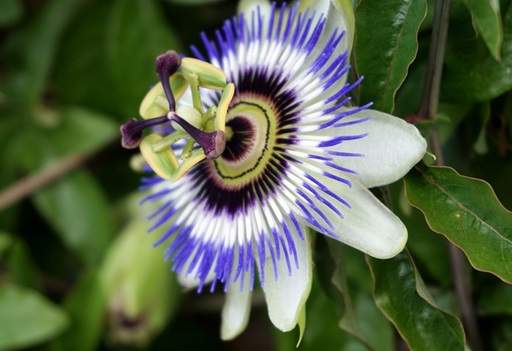
Passionflower is a unique, popular climber
South and west-facing walls receive sunlight for most of the day, providing you with the widest choice of climbing plants to use - Clematis, Lonicera (Honeysuckle), Vitis (Grape Vine), Wisteria and Campsis Radicans to name a few.
Finally, give some consideration to the eventual height/spread of different possible climbing plants compared to the space available in your garden. Some varieties such as Wisteria Sinensis have substantial ultimate heights and spreads which, whilst being ideal for cloaking the walls of larger houses, can make them more difficult to keep shipshape in smaller gardens, especially given their tendancy to become more rigorous once established. We recommend selecting climbers indicated as being 'Fully hardy' for exposed gardens.
Uses for Climbing Plants
Climbers are highly versatile and invaluable for adding ascent, flowers, foliage and a wonderful scent to otherwise flat garden landscapes. They are particularly useful for smaller gardens due to their upward, rather than outward, growth habit, requiring far less lateral space than shrubs. They are also excellent wildlife attracting plants and can be a haven for birds such as robins and wrens which will look to nest in them.
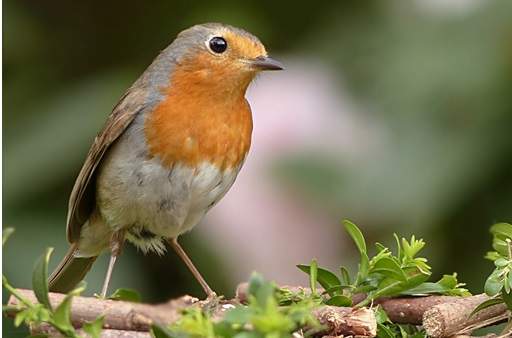
The conventional use of climbers is to brighten up and decorate bare house walls. Modern houses in particular often have particularly stark lines which can be softened and enriched by using a Clematis or Wisteria. For quick coverage, we recommend Clematis Montata as the fastest growing of all the clematis and the easiest to grow. Climbers are also excellent for covering arches, fences, trellis, pergolas, arbours, obelisks or pillars and can be used effectively to provide privacy from nosey neighbours.
They can be used to hide ugly and unsightly objects and features in the garden, being the saviour of many an unattractive eye-saw. Use evergreen or flowering varieties to cloak trees which are either dead or unattractive, or cover bare fences, tree stumps, run-down outbuildings and tumbling walls. Many climbers look particularly attractive when allowed to clamber over natural supports such as conifer trees, bushes and shrubs. Rambler roses, Clematis, Hedera, Jasmine and Lonicera can all be used to climb or clamber up trees in order to provide attractive greenery or an eye-catching floral display.
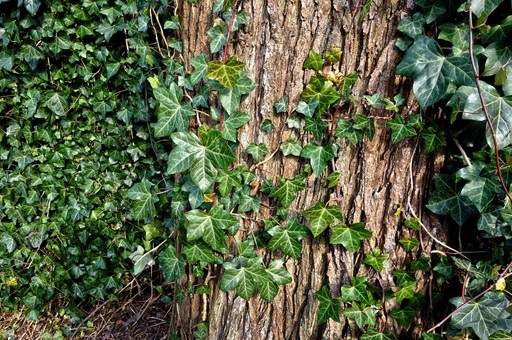
Garden Care
Installing a support structure
Unless your climber is self-clinging, you need to make sure it has something to twine around and offer some initial training. The structure you use to support your climber should be secure and strong, because the plants can become heavy with age. Whilst trellis work well for smaller spaces, arranging your own network of wires is often the best solution where greater height or a non-standard growing arrangement is sought.
If you choose to affix your own wires, use vine eyes with wire held taut between them. Set your first row of wire at 30cm (12 inches) above the ground, then leave 45cm (18 inches) between subsequent horizontal rows. Make holes in your brickwork with a drill at the start and end of each row, insert wall plugs into the holes, then screw the vine eyes into position. By using a wire that is easily malleable using your fingers and thumb, you should be able to secure it taunt between the two vine eyes before cutting off any excess wire.Once planted, tie the stems of your climber to your support framework using soft garden twine.
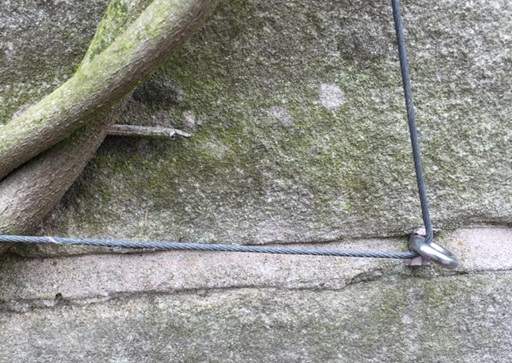
Vine eye securing a support wire
Planting
Container-grown climbers can be planted at any time of the year, except if the soil is frozen or waterlogged. However, container grown evergreen climbers are best planted between April and May so they can become established before the cold weather. Autumn is the best time for deciduous climbers because the soil is still warm enough to encourage some root growth before the onset of winter.
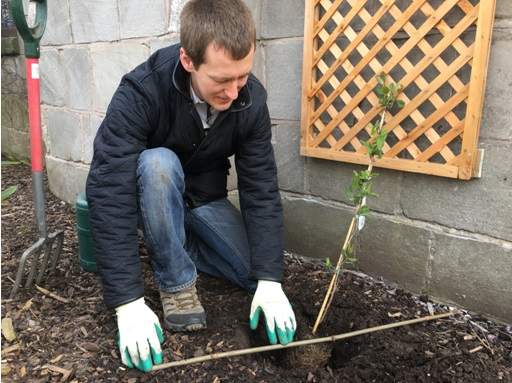
Plant 30-45cm (1 to 1.5 feet) away from the base of the wall or fence you'd like to train the climber over so rainwater can reach the roots. Prepare the soil properly - never plant into builder's rubble - and dig the planting hole twice as wide and 1.5 times the depth of the root mass. Lightly fork the bottom of the hole and mix in some multi-purpose compost. Tease out any congested roots from the container and position in the planting hole. Most climbers should be planted with the root ball at the same level at the top of the soil, except for Clematis which should be planted 5cm (2 inches) beneath the surface. Firm the ground with your boot once backfilling is complete. Water well and mulch with organic matter such as bark, leaf mould or straw after planting to suppress weeds and conserve moisture.
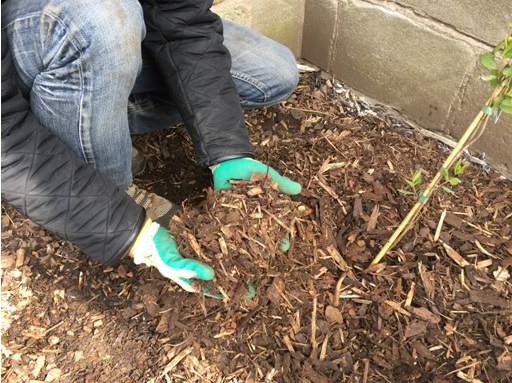
Water well during periods of dry weather in the first few years after planting; particular attention is needed for plants under walls which may not receive much rainfall. Apply a high potassium fertiliser and mulch with organic matter such as homemade or commercial compost, well-rotted manure, leaves or straw in spring, being sure to leave a 10cm (4 inch) collar free of mulch around the base of the plant to minimise the risk of rotting and disease.
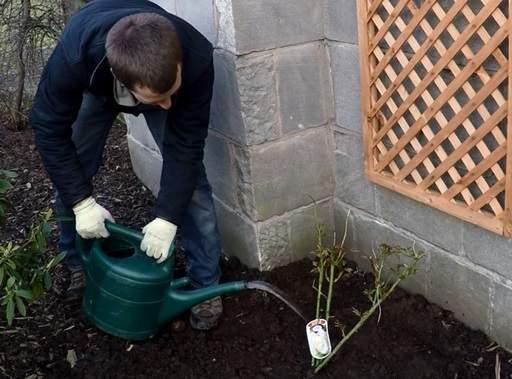
Pruning and Winter Protection
Cut back overgrown climbers when they have finished flowering unless they have fabulous berries and tie new shoots to supports at the same time. Regular pruning will keep your climbing plants looking shipshape and encourage them to bear many flowers. Pruning instructions vary by variety, so read the instructions on the label carefully. Protect all vulnerable climbers over winter by covering them in an insulating layer, such as garden fleece.
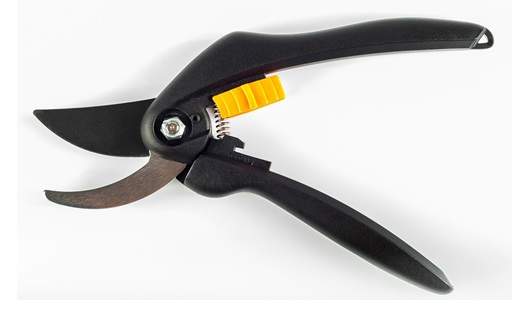
-
Plant Guides
- Guide to Bamboo Plants
- Guide to Climbing Plants
- Guide to Climbing Roses
- Guide to Conifers
- Guide to Floribunda Roses
- Guide to Fruit Bushes
- Guide to Fruit Trees
- Guide to Garden Ferns
- Guide to Garden Shrubs
- Guide to Heather Plants
- Guide to Hedging Plants
- Guide to Herb Plants
- Guide to Herbaceous Perennials
- Guide to Hybrid Tea Roses
- Guide to Japanese Maple Trees
- Guide to Ornamental Grasses
- Guide to Rhododendrons
- Guide to Topiary
Share this page:

